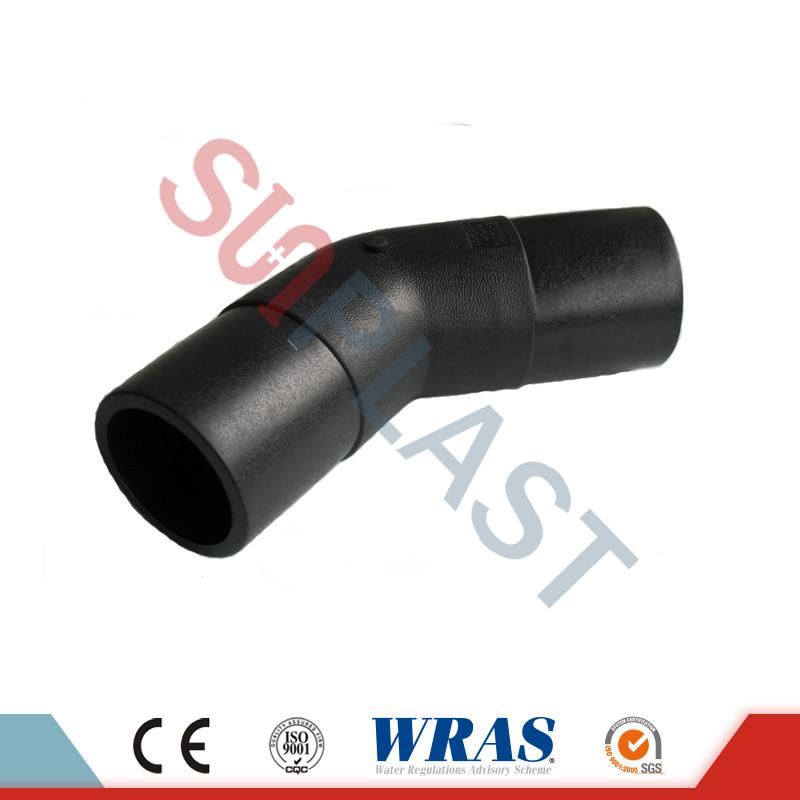Unveiling the Strength: HDPE Butt Fusion and its Distinct Advantages
2024-01-25
Introduction:
In the world of piping systems, the choice of fusion technique plays a pivotal role in determining the strength, durability, and efficiency of the joints. Among the various fusion methods, High-Density Polyethylene (HDPE) Butt Fusion stands out as a robust and reliable approach. Let's explore what HDPE Butt Fusion is and how it distinguishes itself from other fusion techniques.
Understanding HDPE Butt Fusion:
HDPE Butt Fusion is a fusion welding process specifically designed for joining high-density polyethylene pipes and fittings. The term "Butt Fusion" refers to the method of connecting two pipe ends by heating them and pressing them together, creating a homogenous joint. This technique is widely employed in various industries, including water distribution, gas transmission, and industrial piping systems.
Distinguishing Features and Advantages:
1. Seamless Integration:
HDPE Butt Fusion creates a seamless integration of pipes and fittings, resulting in joints that are as strong as the original material. The process ensures a continuous, leak-free connection, eliminating the need for additional gaskets or mechanical fittings.
2. Material Compatibility:
HDPE is known for its versatility and compatibility with a wide range of materials. HDPE Butt Fusion allows for the connection of pipes and fittings made from the same HDPE material, ensuring a cohesive and durable joint.
3. No External Components:
Unlike some fusion techniques that may require external components like solvents, adhesives, or mechanical fasteners, HDPE Butt Fusion relies solely on the inherent properties of the material. This minimizes the need for additional consumables and simplifies the installation process.
4. Uniform Strength Distribution:
The Butt Fusion process creates a joint where the strength is distributed uniformly across the entire fusion area. This ensures that the joint can withstand internal and external pressures, providing a reliable solution for various applications.
5. Resistance to Corrosion and Chemicals:
HDPE is inherently resistant to corrosion and a wide range of chemicals. The Butt Fusion technique preserves these properties, making it an ideal choice for applications where resistance to corrosive substances is crucial.
6. Cost-Effective and Time-Efficient:
The Butt Fusion process is generally considered cost-effective and time-efficient. The simplicity of the method, coupled with the ability to create strong joints without the need for additional components, contributes to overall project efficiency.
Comparison with Other Fusion Techniques:
1. Butt Fusion vs. Electrofusion:
- Butt Fusion involves the heating and joining of two pipe ends directly.
- Electrofusion uses electric current to melt a specific area of the pipe, creating a fusion joint.
- Butt Fusion is often preferred for larger diameter pipes due to its simplicity and uniform strength distribution.
2. Butt Fusion vs. Socket Fusion:
- Butt Fusion is suitable for larger pipe sizes, typically starting from around 63mm in diameter.
- Socket Fusion is used for smaller pipe sizes and involves heating the outside surface of the pipe and the inside surface of the fitting before joining them.
Conclusion:
HDPE Butt Fusion stands as a robust and reliable fusion technique, offering seamless integration, material compatibility, and uniform strength distribution. Its distinguishing features, coupled with its advantages over other fusion methods, make it a preferred choice for numerous piping applications. As industries continue to prioritize efficiency, durability, and cost-effectiveness, HDPE Butt Fusion stands strong as a testament to the evolution of fusion techniques in the world of piping systems.



